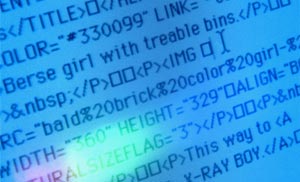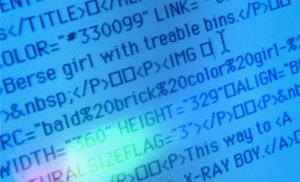
I recently had a fellow motion graphics artist asked me what format used a 50.94 fps frame rate, as a client had requested delivery at this rate. 50.94 is obviously a typo based on 59.94 fps (the field rate for NTSC, and the North American speed favored for some HD media such as 720p for sports and news). But a quick Google search turned it up in multiple places where people should know better. For example, I found it in:
- Brochures for the Harris Videotek QuiC Nedia Analysis Server (look under the specs for AVC-I 50 and 100) and RGB Spectrum SuperView 5000 Multiviewer (look under the HD-SDI Input Module’s Resolution spec)
- The user manual for Apple’s Compressor 3 (look under the Frame Rate explanation: the popup is correct; the explanation is wrong)
- Rental specs for the Panasonic HDX-900 camera (under the “Compatible with 24p” header) and DVS Clipster Uncompressed Recorder (under the HD format specs)
- A technical article on the Sony 750P and F900 HD cameras (first page, bottom of the second column)
…as well as various bit torrent downloads, an old book on timecode, and a few research papers. (Please feel free to add your own findings and horror stories in the Comments section below!)
Whenever there is any doubt about legit HD frame rates, I refer to the official specs released by the ATSC (Advanced Television Standards Committee). The two cornerstone documents are A/53 Part 4: Video System Characteristics (look for table 6.2) and A/54A: Guide to the Use of the ATSC Digital Television Standard (look for tables 5.1 and 5.2). Here is A/53’s Table 6.2:
The above are the “legal” rates. Some cameras will shoot “illegal” rates for various reasons, and of course, people find creative reasons to break the rules all the time. Nonetheless, if a client requests a frame size and rate combination not on this table, ask them if they’re sure.
This leads to an important issue when receiving delivery specs from clients: More often than not, your contact is not the person who will actually be processing the files you deliver. Politely but firmly ask to get the email address of the technical person or engineer who your submission will be handed to for loading, editing, or processing, to ensure you give them what they need – especially when delivering for an unusual display or playback device such as a Jumbotron. Get their reply in writing, should there be any dispute later that you delivered the wrong format. And if the request sounds fishy, trust your gut: There’s a chance there’s a typo in there somewhere (see above), or someone made an incorrect assumption (like the 720×480 square pixel format one Jumbotron client requested).
The content contained in our books, videos, blogs, and articles for other sites are all copyright Crish Design, except where otherwise attributed.

